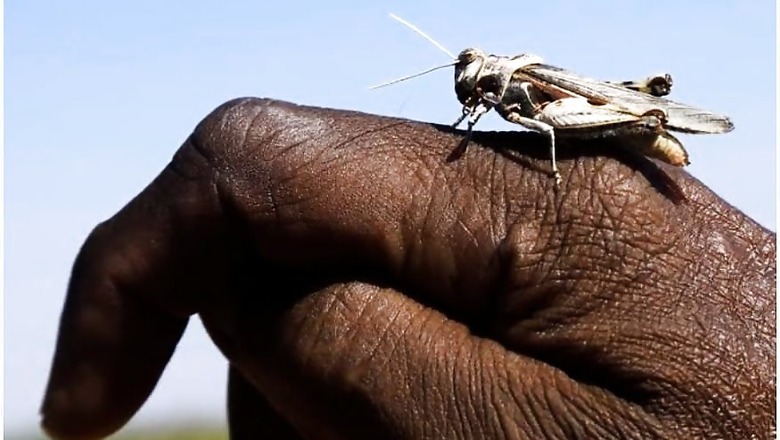
views
New Delhi: To add to their worries during the Covid-19 pandemic, states, including Rajasthan, Punjab, Haryana, Uttar Pradesh and Madhya Pradesh, are facing a locust attack that threatens to damage standing crops and jeopardize food security in the country.
The present locust outbreak has been termed as the worst the country has faced in over two decades.
Locusts are one of the oldest migratory pests in the world. They differ from ordinary grasshoppers in their ability to change behaviour and form swarms that can migrate over large distances, according to the Food and Agriculture Organization (FAO) of the United Nations.
Of all its species, the Desert Locust (the ones attacking India) is the most destructive and can form dense swarms in response to environmental stimuli. During a plague, it has the potential to easily affect 20 per cent of the Earth's land, more than 65 of the world's poorest countries, and damage the livelihood of one-tenth of the world's population.
“They are ravenous eaters who consume their own weight per day, targeting food crops and forage. Just a single square kilometre of swarm can contain up to 80 million adults, with the capacity to consume the same amount of food in one day as 35,000 people. Large swarms pose a major threat to food security and rural livelihoods,” the FAO website reads adding that a swarm the size of Bamako, Niamey or Paris will consume the same amount of food in a single day as half the population of Mali, Niger, and France, respectively.
Locusts in India are generally seen between July and October. However, their early arrival this year has raised concerns.
Originally found in West Asia, a Desert Locust lives for about 90 days. It takes up to two for the eggs to hatch and they become adults after 6 weeks. Adults take a month to mature and be ready to lay eggs.
Locusts can multiply at a rapid pace. There can be an exponential increase in locust numbers with every new generation of breeding. The extent of this could be 20 times increase in their numbers after three months, 400 times after six months, and 8000 times after nine months. They generally migrate to India at the onset of monsoon as rainfall is conducive to their survival and reproduction.
Desert Locusts can fly up to 150 km per day and, thus, migrate over large distances.
Favourable climatic conditions such as longer monsoon and cyclonic storms in the northern Indian Ocean allowed widespread breeding of the pest in East Africa, Southwest Asia, and the area around the Red Sea responsible for the current outbreak.




















Comments
0 comment